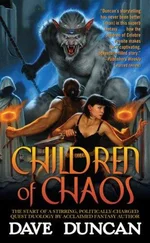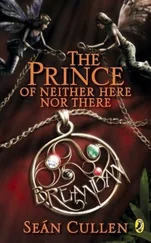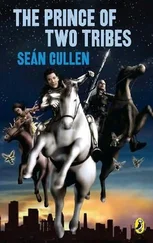The stress wore Fuselier down. He would have twenty years at the Bureau that October and be eligible for his pension. He announced his retirement for that date. He would be fifty-four.
On September 11, 2001, the country was attacked. Bin Laden was behind it. Fuselier postponed his retirement and spent most of the next eleven months on the case. By the summer of 2002, the United States had taken over Afghanistan, bin Laden had fled into hiding, and the urgency had abated.
Fuselier’s son Brian graduated from Columbine High that May—the last class Mr. D had been waiting for. Brian was leaving for college in July. Dwayne scheduled his retirement for the week afterward, so Brian wouldn’t see his dad lazing about jobless.
“I could see a change the next day,” Brian told his dad when he returned home for a visit. “You had mellowed out more than I had ever seen.”
Fuselier missed the work, though. Within months, he was consulting for the State Department. It sent him to conduct antiterrorism training in Third World countries. He spent a quarter of the year in sketchy sections of Pakistan, Tanzania, Malaysia, Macedonia—anywhere terrorists were active.
Mimi worried. Dwayne didn’t think about it much, and Brian didn’t hear the tension return to his voice. Fear wasn’t the problem at the FBI; it was the responsibility.
“It was getting harder going to work knowing someone’s life might depend on me not making any mistakes that day,” he said.
____
Shortly before Brian left Columbine, Michael Moore’s Bowling for Columbine drew raves at Cannes. It became the top-grossing documentary in U.S. history. It wasn’t really much about Columbine, and the title featured a minor myth—that Eric and Dylan went bowling on April 20—but it included a dramatic scene where Moore and a victim went to Kmart and asked to return the bullets still inside the guy. The stunt and/or publicity around it shamed Kmart into discontinuing ammunition sales nationwide.
Marilyn Manson was interviewed in the film. Moore asked Manson what he would say to the killers, if he had a chance to talk to them: “I wouldn’t say a single word to them,” he said. “I would listen to what they have to say, and that’s what no one did.” That was the story the media had told.
The connection to KMFDM, the nihilistic band Eric did idolize and quote frequently, was ignored by the major media. Fans got word, however, and the band issued a statement of deep remorse: “We are sick and appalled, as is the rest of the nation, by what took place in Colorado… none of us condone any Nazi beliefs whatsoever.”
____
The killers’ parents remained silent. They never spoke to the press. Pastor Don Marxhausen stayed close to Tom and Sue Klebold. He was a great comfort. Sue went back to training disabled students at the community college. That helped her cope.
“It’s amazing how long it took me to get up and say my name at a meeting, to say, ‘I’m Dylan Klebold’s mother,’” she said later. “Dylan could have killed any number of the kids of people that I work with.”
Shopping could be intimidating—anticipating that moment of recognition as a salesperson examined her credit card. It was a distinctive name. Sometimes they noticed.
“Boy, you’re a survivor,” one clerk said.
Tom worked from home, so he had a choice about when to go out. He stayed in all the time. Pastor Don worried about him.
Reverend Marxhausen paid for that compassion. Much of his parish loved him for it; others were outraged. The church council split. That was untenable. A year after the massacre, he was forced out.
Marxhausen had been one of the most revered ministers in the Denver area, but now he could not find a job. After a bout of unemployment, he left the state to head up a small parish. He missed Colorado, and eventually moved back. He got a job as a chaplain at a county jail. His primary function was to advise inmates when loved ones had died. He was born for the job, ministering to the desperate. He empathized with each one, and it sucked the life out of him.
____
The lawsuits sputtered on for years. They got messier. A rash of new defendants was added, including school officials, the killers’ parents, the manufacturer of Luvox, and anyone who had come in contact with the guns. The suits were consolidated in federal court. Judge Lewis Babcock accepted the county’s two major arguments: that it was not responsible for stopping the killers in advance, and that cops should not be punished for decisions under fire. Babcock said the authorities should have headed off the massacre months earlier but were not legally bound.
In November 2001, he dismissed most of the charges against the sheriff and the school. The families appealed, and the county settled the next year: $15,000 each—a fraction of their legal fees. The discovery process never brought much to light; it didn’t need to. The Rohrboughs’ initial offensive had set the legal process in motion, and it continued under its own power.
Judge Babcock refused to dismiss the Sanders case. He balked at the contention that Dave’s rescue involved split-second decisions.
“They had time in the third hour!” Babcock boomed.
The cops had hundreds of people to rescue, their attorney responded. They’d had to allocate resources.
More then 750 cops had been on the scene, the judge reminded him. “It’s not as though they were a little shorthanded out there that day,” he said.
In August 2002, Jeffco paid Angela Sanders $1.5 million. It admitted to no wrongdoing. The last Jeffco case to close was Patrick Ireland’s. He got $117,500.
After years of wrangling, most of the fringe cases were dismissed. Luvox was pulled from the market. That left the killers’ families. They wanted to settle. They didn’t have a lot of money, but they had insurance. It turned out their home owner’s policies covered murder by their children. About $1.6 million was divided between thirty-one families. Most of it came from the Klebolds’ policy. Similar agreements were reached with Mark Manes, Phillip Duran, and Robyn Anderson, for an estimated total of approximately $1.3 million.
Five families rebuffed the Harrises and Klebolds: no buyout without information. It really wasn’t about the money for the Rohrboughs and four others. They were battling for information, and they proved it.
But they were caught in a stalemate: the killers’ parents would talk if the victims dropped the lawsuits; the victims would drop the suits if the parents spoke.
For two more years, it continued. Then the judge brokered a deal. The holdouts would dismiss their suits if the killers’ parents answered all their questions—privately, but under oath. It was a bitter compromise. The holdouts wanted answers for the public as well as themselves. They settled for themselves.
In July 2003, the four parents were deposed for several days. Media came to photograph them. They had remained so private that few reporters even knew what they looked like. Two weeks after the depositions, an agreement was announced. It appeared to be over.
But Dawn Anna called for the depositions to be made public: understanding the warning signs could prevent the next Columbine. A chorus gathered behind her. A magistrate ruled that the transcripts would be destroyed, per the agreement. That set off a public outcry and a wave of open records requests. Judge Babcock agreed to consider arguments.
It had taken four years to reach this point. They were only halfway there.
In April 2007, Judge Babcock finally ruled. “There is a legitimate public interest in these materials so that similar tragedies may hopefully be prevented,” he wrote. “I conclude, however, that the balance of interests still strikes in favor of maintaining strict confidentiality.”
Читать дальше







